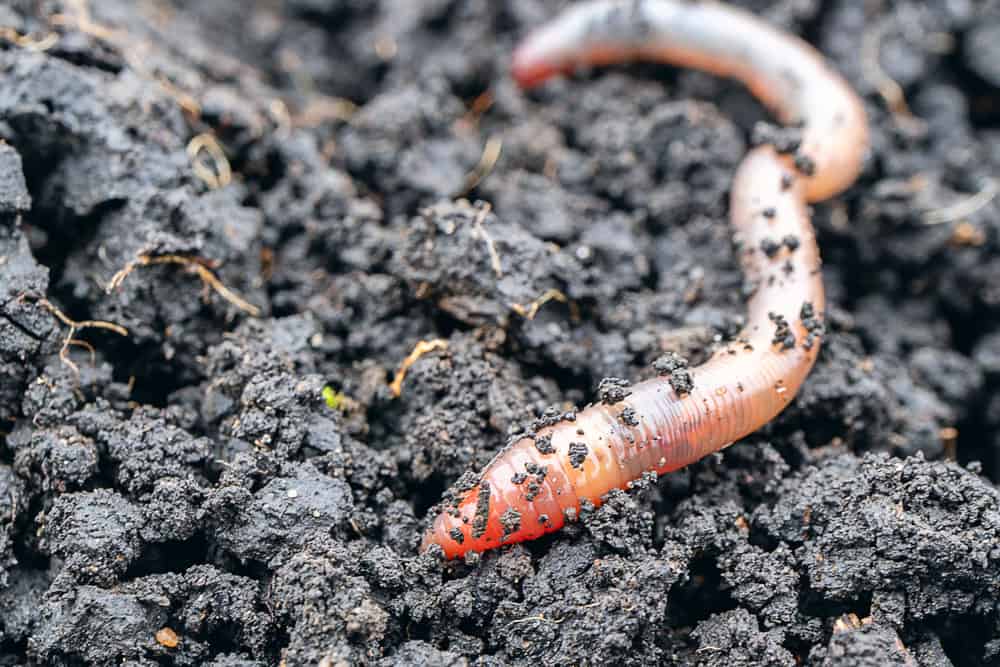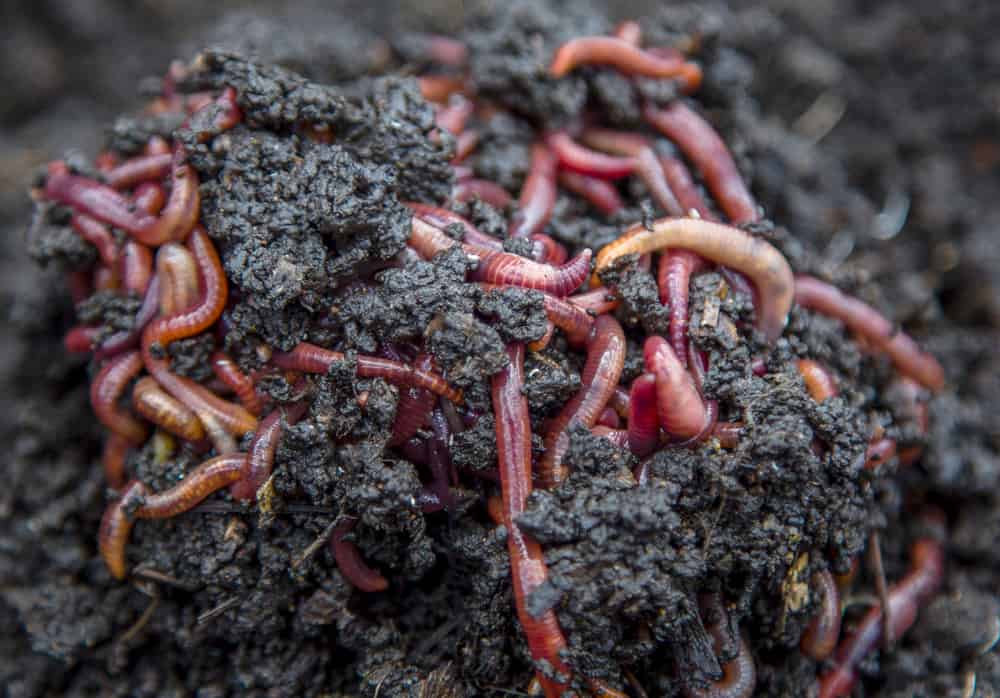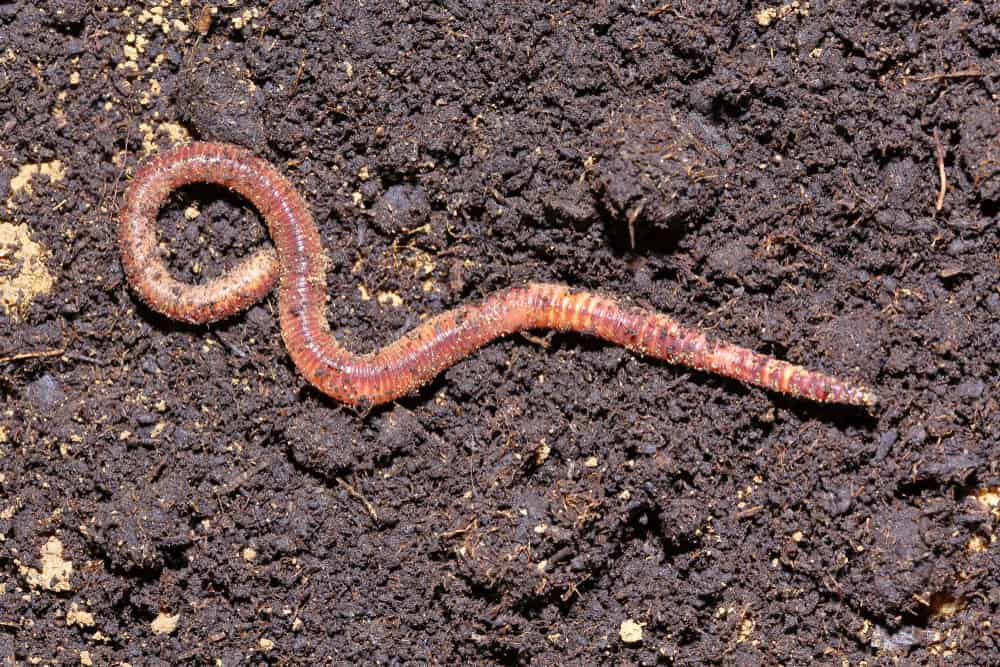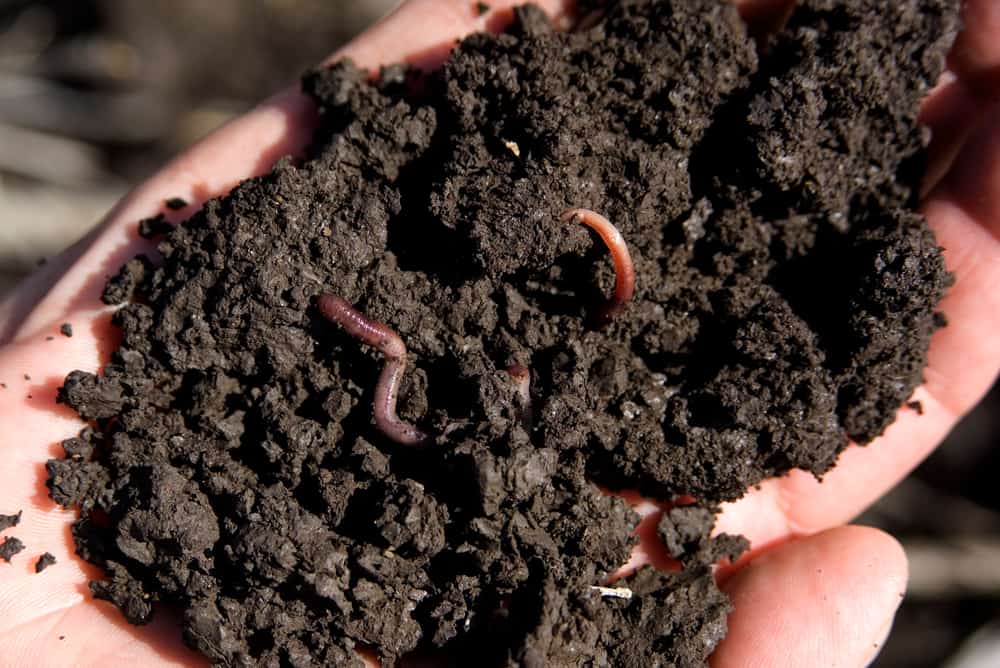The sight of worms sickens some people, and others find them interesting. It’s fascinating how they move without limbs or know where to go, considering they have no eyes. They cant smell, but can they taste?
If so, wouldn’t you like to know what worms like to eat most?
Let’s find out.
Worms Habits And Biology
Worms have long cylindrical bodies with no limbs and eyes. They differ in size depending on the species. Some are microscopic, whereas others can grow up to 58 meters long such as the African giant earthworm.
Worms are widely distributed, with some inhabiting marine, freshwater, or terrestrial areas. Other species of worms are known to be parasitic and inhabit the bodies of living organisms.
From a human perspective, worms are beneficial as soil conditioners. These are products added to the soil to improve the fertility of the ground.
Many worms lack muscles that help them move, and most are dependant on animals or other forces as a means of transportation. Few species of worms use specialized muscles to advance on their own.
Parasitic worms depend on foods consumed by their hosts to survive. In contrast, worms that live in water bodies make a meal of bacteria and algae. Water-dwelling worms will also feed on sand and soil.
Earthworms are known as burrowers, meaning they live underground. They leave their burrows at night, mostly when the weather is damp and cloudy, searching for food.
You can find earthworms in soils rich in decomposing organic matter, normally in lawns, gardens, and irrigated farms, among other places.
Earthworms are cold-blooded, meaning their body temperatures vary with the surrounding temperature.
They eat dead organic matter. Earthworms ingest the food together with the soil then excrete the undigested food in the form of worm casting.
Worms consume so much food that their feces is equal to their body weight. The good news is that their feces (worm casting) make good soil manure.
As hermaphrodites, worms possess both male and female reproductive organs
and don’t require a mate to reproduce. Most worms reproduce by splitting themselves in half, bringing forth an identical individual. The process is known as transverse fission.
Do Worms Eat Dirt?
Yes. Most worms eat dirt. The earth contains lots of organic matter, from dead animals to decaying organic matter, usually fused with soil.
Earthworms feed on dirt rich in decaying matter and obtain most of their nutrients from the soil. Worms spend a large portion of time feeding on dirt and excrete (poop) as they go.
In the process, they fertilize the soil and contribute significantly to the environment. Worm casting provides a natural, well-balanced diet for plants.
What Do Worms Like To Eat Most?
Worms’ diets vary depending on the habitats they inhabit, as previously discussed. However, they are mostly known to feed on organic matter. Below are several foods worms like to most:
- Urban worm food –is a mix of alfalfa, kelp, chicken mash, soybean hulls, and other protein-rich foods healthy for worms and can be readily purchased from stores.
- Chicken mash –helps worms grind their food for digestion.
- Pasta –is fed on regularly as it is unhealthy for worms.
- Apples –is rich in carbohydrates. The whole fruit is also easily digested by the animal.
- Coffee grounds –provide worms with nitrogen.
- Leafy green veggies –such as spinach, kales, or lettuce are rich in nutrients such as proteins that provide good supplements for the worms’ diet.
- Tomatoes –though slightly acidic, worms find it appealing and will therefore eat them in moderation.
- Squash, pumpkins, and melons –are easily digested by worms. Worms find them appetizing due to their sugar contents.
- Cardboards –provide carbon and carbohydrates.
- Vegetable waste –such as potato peels, broccoli carrot peelings, and so on- acts as good supplements to the worm diet.
- Bread –is eaten in moderation, either moldy or fresh.
- Coconut coir –is the fiber found on the outer husk of the coconut. Coconut coir is rich in carbon and carbohydrates.
- Cooked foods – homemade food is high in a variety of nutrients and is healthy for worms.
- Tea leaves and coffee grounds –are high in carbon and carbohydrates.
- Cereals –are eaten in moderation.
- Eggshells –are better digested when crushed into small pieces. They provide calcium for worms.
- Paper –paper provides the worm with carbon.
- Dry leaves –are rich in carbon and carbohydrates.
- Lawn or grass clippings.
- Banana peels.
- Teabags –has carbon and carbohydrates.
- Decomposing bodies of their species.
Foods To Avoid Feed Worms
Like every other creature, worms also have preferences when it comes to what they eat. Sometimes foods they consume can be harmful if not fatally toxic to the worm.
So, here are some items to avoid feeding your worms:
- Yard trimmings containing pesticides – will end up killing worms.
- Human or pet waste –feeding worms human waste may lead to the spread of diseases through worm castings.
- Poisonous plants –such as some species of mushrooms or poison ivy, may kill worms.
- Onions –should not be fed to compost worms as they possess foul odors and rot in your worm bin.
- Dairy products –cannot be digested by worms.
- Meat –may contain preservatives harmful to worms.
- Bones –will take worms a long period to eat and may not be digested.
- Processed foods –such as sweets and chocolates, contain harmful substances that can kill worms.
- Citrus foods –are acidic and contain other natural chemicals that can kill worms if eaten in large amounts.
- Spicy foods –worms breathe through their skin, and feeding on spicy foods can irritate, thus interfering with oxygen intake.
- Newspaper with colored print –this can be toxic to worms.
- Keep these food items far from your worms and sit back and watch nature take its course.
Tips to feeding worms
Worm composting is where you use worms to recycle food scraps and other organic matter into helpful soil material called vermicompost/ worm compost.
- If you practice gardening or farming and want to improve the quality of your soil, a simple way of doing so is to practice worm composting.
- For that, you’ll first need to construct a simple worm compost /worm bin. Then you’ll need to know what your worms like to eat.
- Here are some tips to consider when feeding and caring for your worms:
- Provide your worms with food and veggie scraps. Worms enjoy a variety of fruits ranging from bananas to apples. Nevertheless, you should avoid feeding them oranges, grapes, and other citrus fruits.
- Put eggshells and coffee ground in your worm bin. Eggshells are a good source of calcium for your worms, and coffee grounds provide nitrogen for them.
- Ensure the eggshells are free of fats such as butter before feeding your worms.
- Coffee grounds supplement the diet of worms.
- Put in some sawdust, hair, or sawdust into your worm bin. Hair provides the worm with proteins, and sawdust acts as a good supplement.
- Use organic matter as bedding for your worm bin. Organic beddings stimulate the worms’ natural environment. Grass clippings, coconut coir, and leaves in addition to paper, cardboards are ideal for organic beddings.
- Ensure to soak the cardboard and paper before adding it to your worm bin to start the decomposing process.
- Ensure not to feed your worms any spicy, salted, or preserved foods. Worms breathe through their skins, and spicy foods may irritate them.
- Salt, on the other hand, can absorb all the moisture from worms, leaving them paralyzed.
- You should avoid feeding your worms oils and meat. Avoid placing beef, poultry, or other meat products in your worm bin. These foods are hard to digest and produce a foul odor.
- Dairy products like cheese, milk, and yogurt all contain preservatives that can harm your worms.
- Give your worms equal amounts of brown and green foods. Brown foods like cardboard and sawdust provide your worms with oxygen.
Following these simple steps will be a win-win situation for both your worms and yourself. They get free food, and you get better soil to grow more food or other plants. And with patience, you’ll reap what you sow.
Frequently Asked Questions
How quickly do worms multiply?
Worms multiply swiftly and are usually ready to reproduce in about a month. Depending on the environmental conditions, they can take up to six months to reach full size.
How do you tell apart the head and the tail of an earthworm?
An earthworm’s head is close to its citellellum (saddle). Earthworms also tend to proceed with their heads when moving ahead. Therefore it’s always facing the direction it’s moving.
Why are some earthworms colored and others are not?
Earthworms have colored skin to protect them from the sun. Worms that feed on the surface commonly have dark backs to avoid skin damage from the sun’s harmful ultraviolet rays.
If you carefully look at a nightcrawler, it has a dark head and a light tail, showing that they keep their bottom buried in the ground when they feed.
Summary
You may have once considered the gross or disgusting, but now you know better. With the knowledge of what worms like to eat most, you can invest in your worm dip.
You could also make use of the soil to better your gardening or, better yet, venture into farming. The opportunities are limitless.



